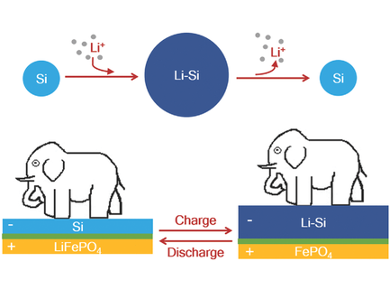Electrode materials in lithium-ion batteries often show volume changes during charging and discharging cycles. Typically, this is considered a major flaw because the associated mechanical stress results in poor cycling performance of the batteries. Consequently, much effort is spent on decreasing this effect. Hui Wu and Xiaoyan Li, Tsinghua University, Beijing, China, and colleagues propose to make use of what is normally undesired.
For their battery assembly, the researchers designed a pouch cell by combining a LiFePO4 cathode with silicon as the anode – a material that is know for its huge volume change. The battery device was able to displace a load of 21 kPa by 9 µm over ten charging/discharging cycles without decrease of performance. The system showed a fast response time to electric pulses and a linear relationship between charging time and displacement. Very similar results were found when the load was increased significantly to 17 MPa.
According to the team, the low driving voltage and the possibility to adjust the speed of displacement makes these devices valuable candidates for mechanical actuation and nanopositioning applications.
- Cycling of a Lithium-Ion Battery with a Silicon Anode Drives Large Mechanical Actuation,
Lang J, Ding B, Zhu T, Su H, Luo H, Qi L, et al.,
Adv. Mater. 2016.
DOI: 10.1002/adma.201603061




